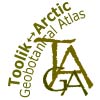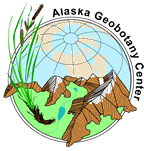Imnavait Creek Permanent Vegetation Plots
Walker DA, Lederer ND, and Walker MD. 1987. Permanent vegetation plots: Site factors, soil physical and chemical properties and plant species cover. Department of Energy R4D Program, Institute of Arctic and Alpine Research, University of Colorado, Boulder, CO.
Home //
Vegetation communities and microsites //
Summary of areas sampled //
Environmental variables //
Environmental information //
Soil descriptions //
Soil physical characteristics //
Soil chemical characteristics //
Species composition //
Appendices:
Plot and soil photos //
Equivalent vegetation units //
Plot location map
Table 3. Legend for the environmental variables used in the R4D vegetation studies.
Error 1129: Host 'grotto.geobotany.uaf.edu' is blocked because of many connection errors; unblock with 'mysqladmin flush-hosts'

